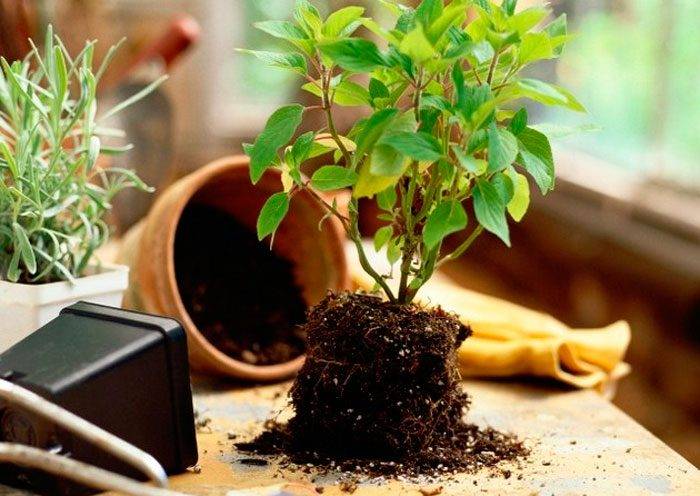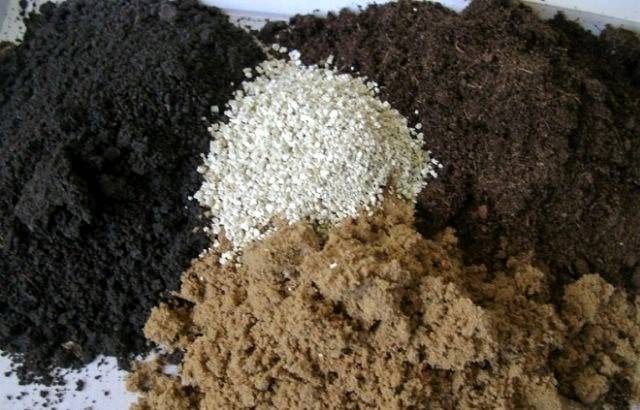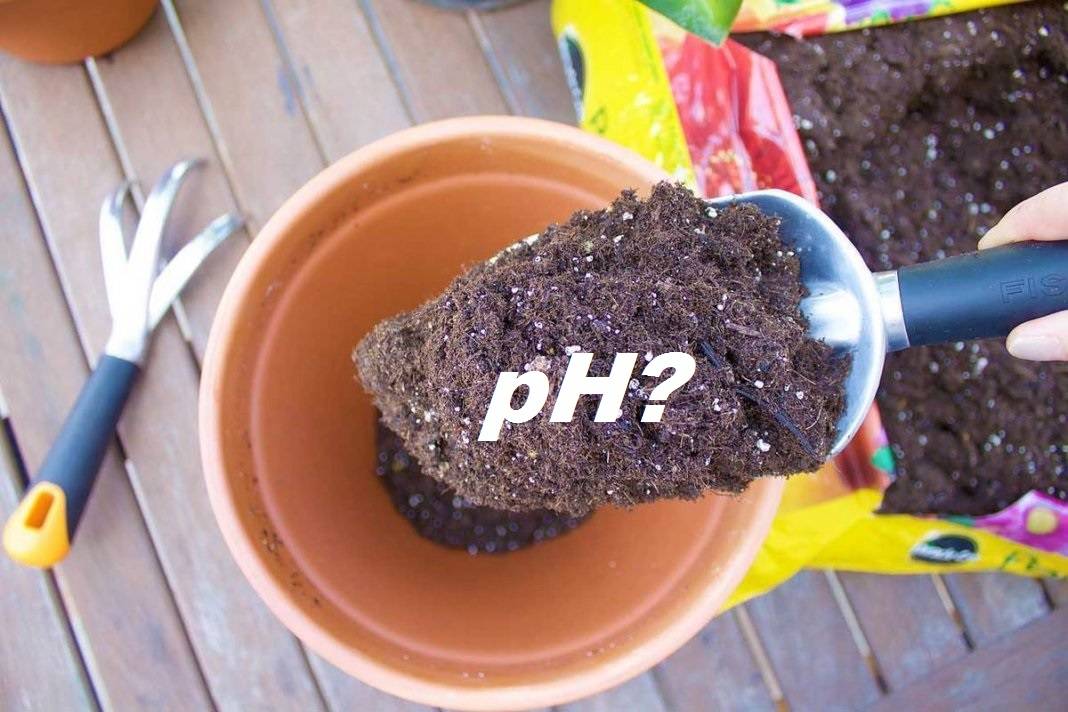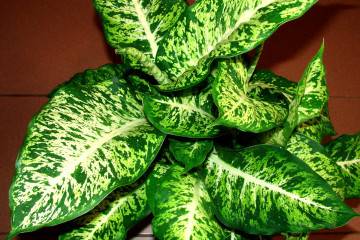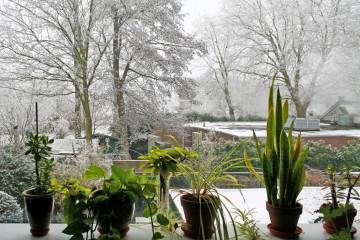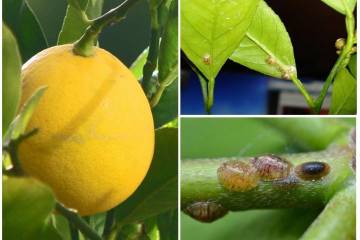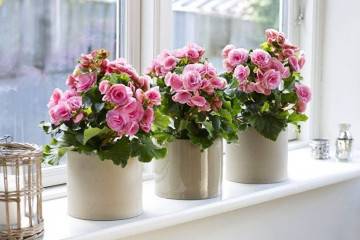What should be the earth for indoor flowers - acidic or alkaline
Content:
It would seem that the abundance of ready-made substrates for indoor floriculture eliminates the need to prepare potting mixes. And yet, most experienced florists prefer their own mixed soil. If you are going to create a special soil for indoor plants at home, you should find out what types of soils can be used for this and what qualities they have.
Benefits of homemade soil
The quality of ready-made land mixtures can often be questioned. At home, it is difficult to check whether the necessary requirements for the soil are met:
- the percentage of components required by a particular plant;
- disinfection;
- acidity index.
Moreover, experienced flower growers prefer to mix the soil, not only relying on the needs of the type of plant for which this soil is intended, but also based on its size, age, and keeping conditions.
How to make the perfect soil with your own hands
You can prepare a good soil mixture at home from natural or from commercially available components. In the first case, you will have to additionally check the acidity level of the soil, while the manufacturer indicates the acidity indicator on the packages of store mixes.
Basic soil components
Among the main components used in the preparation of soil for indoor plants are turf, coniferous, humus, compost, leaf, as well as peat and sand. In addition to these, there are other components that are mixed into the ground to improve its qualities:
- Perlite or vermiculite allows you to balance the composition by making it permeable to air and moisture.
- Charcoal is essential for absorbing excess moisture and as a preventive measure against some pathogens.
- Chalk or lime make up for the lack of calcium in the soil and lower its acidity.
- Expanded clay, broken brick or clay shards are needed to create a drainage layer.
- Coconut fiber or bark is added to substrates for epiphytic plants, as well as those preferring loose soils.
- Sphagnum disinfects the soil and is able to retain moisture.
- Mole earth, collected from the mounds near the burrows of animals, is good in that it is completely cleared of weed seeds, insects and their larvae.
How to disinfect flower soil
Land brought from a backyard or forest can contain microorganisms, bacteria, or insect pests. Therefore, mixing the soil with your own hands, it is often impossible to do without a disinfection procedure.
The cultivation of garden soil can be carried out with the preparations Fitosporin, Gamair or Alarin. This will destroy bacteria and fungal infections, making the composition comfortable for indoor plants.
The main types of soil
To mix soil that is suitable for growing a particular plant, you need to understand the qualities and properties of each type of soil. At the same time, it does not matter at all whether the land for indoor flowers was bought or dug up with his own hands.
Light, medium and heavy soil mixtures
Although there is a so-called "universal soil", it may not meet the requirements of many plants grown in apartments. All soil mixtures should be divided into light, medium and heavy.
Light soil mixtures are suitable for cacti and succulents. The light mixture consists of the following components:
- 4 parts of peat;
- 2 part of garden land;
- 1 part of leafy or sod land;
- 4 pieces of sand;
- a small amount of agroperlite, vermiculite, charcoal, drainage material.
Soil mixtures with a medium-density composition are more versatile. They are used for breeding decorative deciduous and flowering plants in pots. A medium mixture can be obtained by combining the following components in certain proportions:
- 4 parts of peat;
- 3 pieces of garden land;
- 2 parts of sod land;
- 1 part compost or humus;
- 3 pieces of sand;
- some vermiculite and charcoal.
Heavy mixes are recommended for large potted plants. These include tropical palms, vines, ferns, azaleas. The composition of the heavy mixture is as follows:
- 6 parts of peat;
- 4 pieces of garden land;
- 3 parts of leafy or sod land;
- 2 pieces of sand;
- 2 parts of compost or humus (can be replaced with vermicompost);
- additionally - bark, pine needles, sphagnum, charcoal.
Humus earth
This type of soil is created by mixing rotted manure with soil in a special pit or heap. A variety of this type of soil is biohumus - the most fertile additive to soil mixtures for any indoor flowers. In fact, this is the same humus, but produced using a humus worm.
Sod land
The type of soil taken from the place of growth of various grasses is preferable - cereals or legumes, since such a soil has the highest nitrogen content. However, the soil dug up from the upper layer of the meadow is considered quite suitable.
Coniferous land
An acidic type of soil harvested where conifers grow. Such land is necessary for some indoor plants - for example, saintpaulias, azaleas, gloxinias, begonias - as the main component of the soil mixture.
Leaf land
The most common forest land or soil from a personal plot, taken from under a fruit tree, is very nutritious due to the rotted foliage that is part of the composition. It is often recommended to use leafy soil without other types of soil, only with the addition of a small amount of sand or perlite.
Sand
It is almost impossible to do without this component when composing earth mixtures for various home colors. Although sand is not nutritious, it makes the soil looser and more permeable to moisture and air. However, it is worth considering that only river sand is suitable, and by no means construction sand.
Peat soil
Peat is the main component of ready-made soils, making them lighter and looser. Its downside is that after it dries completely, it absorbs moisture very poorly, as a result of which watering the plant does not give the desired result - the water passes through the substrate without lingering in it.
The acidity of the soil for indoor flowers
Knowing which trees and flowers love acidic soil, and which are neutral or alkaline, you can mix a suitable soil for them. Usually peat soil is acidic, soddy and leafy are neutral (pH 5.0 - 5.5) or have a slightly alkaline reaction, and in clay soils it is alkaline (pH 5.5-6.5).
What indoor flowers love acidic soil, list:
- azalea;
- aspidistra;
- bougainvillea;
- ginura;
- blueberry;
- hydrangea;
- dichorizander;
- camellia;
- coffee;
- laurel;
- lianas (gloriosa, passionflower, clerodendrum, hoya);
- oleander;
- palm trees (dracaena, coconut, Livistona, rapese, date, chamedorea, hovea, cicas yucca);
- ferns;
- pelargonium;
- rhododendron;
- ficuses;
- fuchsia;
- cyclamen;
- sheffler.
List of plants that love alkaline soil:
- anthurium;
- balsam;
- begonia;
- gloxinia;
- dieffenbachia;
- calathea;
- croton;
- arrowroot;
- ripsalidomsis;
- selaginella;
- Saintpaulia;
- syngonium;
- skirpus;
- spathiphyllium;
- scindapsus;
- tradescantia;
- philodendron;
- fittonia;
- cissus;
- Schlumberger.
Plants adapted to neutral soil:
- abutilone;
- aloe;
- albition;
- amaranth;
- ampelopsis;
- asparagus;
- aphelandra;
- brunfelsia;
- hibiscus;
- hippeastrum;
- dizigoteka;
- Kalanchoe;
- castanospermum;
- coleus;
- lemon;
- myrtle;
- milkweed;
- rose flower;
- sansevieria;
- sedum;
- syngonium;
- cineraria;
- eucalyptus.
How to make acidic soil at home
There are several ways you can increase the acidity of the soil at home. Loose soil is acidified by adding a significant portion of organic matter: compost, needles or sphagnum. Of the mineral compounds, colloidal sulfur can be used.
You can also acidify soil mixture for indoor plants with improvised means. For example, how to acidify the soil with citric acid? To do this, take citric acid at the rate of 1-2 teaspoons per 10 liters of water, and water the substrate with this solution.
For the successful cultivation of various plants in an apartment, especially those that came from tropical places, it is imperative to take into account their needs for the composition of the soil. Having learned how to mix the soil and acidify it correctly, you can grow almost any plant on your windowsill.
